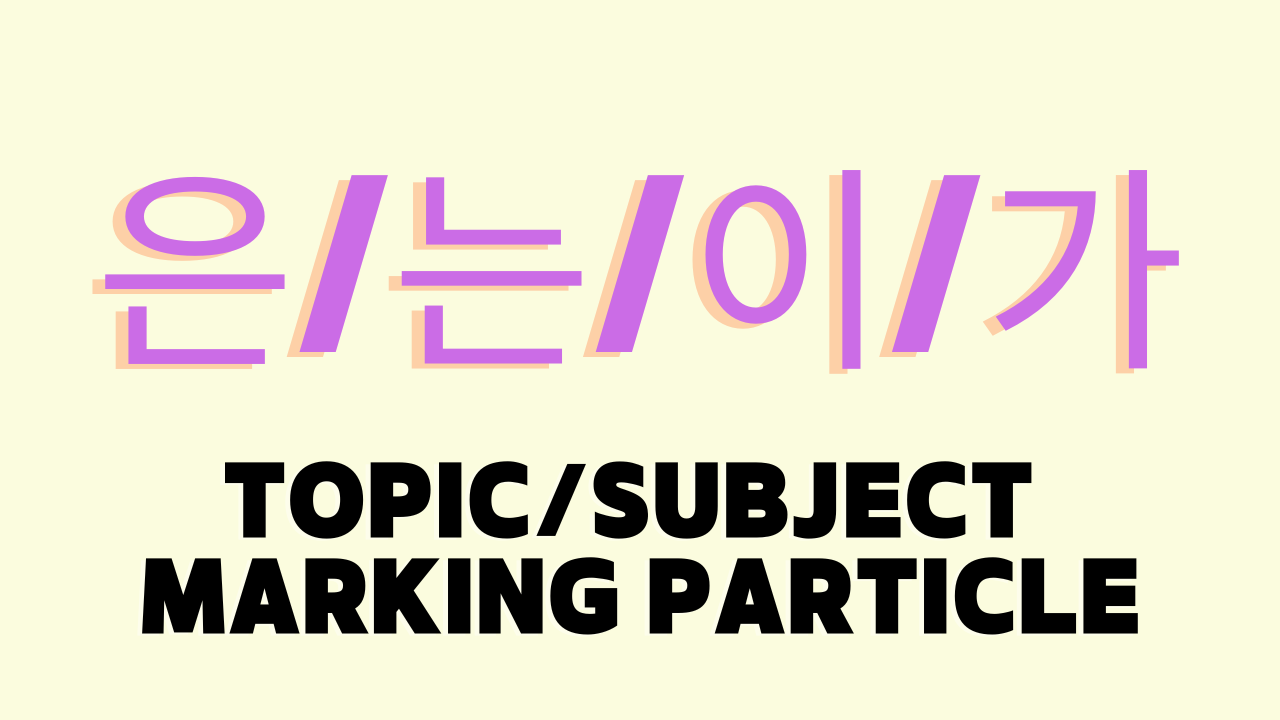What is the difference between the topic particle 은/는 and the subject particle 이/가?
Oct 17, 2022
- Author: Niya (Trinidad and Tobago), Isabella(Italy)
- Editor: Good Job Korean team
Long story short, topic particle 은/는 is used for what you are talking about and it can be sometimes a subject and sometimes an object, while 이/가 is only used for the noun, which has to be the subject that takes an action.
Sometimes you can drop particles if a sentence is already clear by the context. This is especially for spoken Korean because Koreans shorten sentences as much as possible when they speak.
Now, let’s look into subject marking particle 이/가 and topic marking particle 은/는 in detail.
- Subject marking particle ‘이/가’
‘이/가’ is added to the end of a subject to designate it as the subject of a sentence. For words ending with a consonant, ‘이’ is added, and for words ending with a vowel, ‘가’ is added.
For example,
'물[mul]’ ends with a final consonant, so 이 should be added like ‘물이’.
*물: water
Whereas ‘친구[chingu]’ ends with a vowel so ‘가’ should be added like ‘친구가’
*친구: friend
- Topic marking particle ‘은/는’
‘은/는’ is added to the end of what the speaker wants to talk about or explain in the sentence to designate it as the main idea, topic, or issue for discussion. Thus, it can be translated as ‘as for’ or ‘regarding’.
For words ending with a consonant, ‘은’ is added, and for the word ending with a vowel, ‘는’ is added.
For example,
'물[mul]’ ends with a final consonant, so 은 should be added like ‘물은’.
*물: water
Whereas ‘친구[chingu]’ ends with a vowel so ‘는’ should be added like ‘친구는’
*친구: friend
- Difference between 은/는/이/가 in terms of nuance
1. Topic marking particle 은/는 is showing contrast to other things.
For 은 and 는, topic particles, not only do they have a nuance of "as for something" but also have a nuance of "unlike other things". Topic particles show contrast to other things.
For example,
눈은 예뻐요= (Your) eyes are beautiful (unlike other parts of your face).
*눈: eye(s)
*예쁘다: to be pretty
By adding the topic particle 은 to 눈, it implies other parts of your face like the nose, lips, and forehead are not beautiful. It sounds very inappropriate if you wanted to compliment eyes, right?
In order to compliment, you had to say ‘눈 예뻐요’, because it is just a neutral sentence without any particles and implies nothing. Now let’s see what happens if you say ‘눈이 예뻐요’
2. Subject particle 이/가 is used when you choose something among some options.
Here is how the subject particle 이/가 works in the sentence.
눈이 예뻐요 = Your eyes are (the most) beautiful (part of your face).
Because 이/가 is used when you choose something among some options, this sentence implies that 눈 has been chosen as a ‘beautiful part’ among other parts of the face.
This is why subject particles are also frequently used for "who, what, which" questions.
Let’s see the sentences, and check the implication in the parentheses.
누가 아파요? : Who is sick? (among the people here?)
뭐가 맛있어요? : What is delicious? (among the dishes on the menu?)
어느 카페가 좋아요? : Which café is good? (among all the cafes in the street?)
*누가: 누구(who) + subject particle ‘가’
*아프다: to be sick
*뭐: what
*맛있다: to be delicious
*어느: which
*좋다: to be good
- Author: Niya (Trinidad and Tobago), Isabella(Italy)
- Editor: Good Job Korean team


